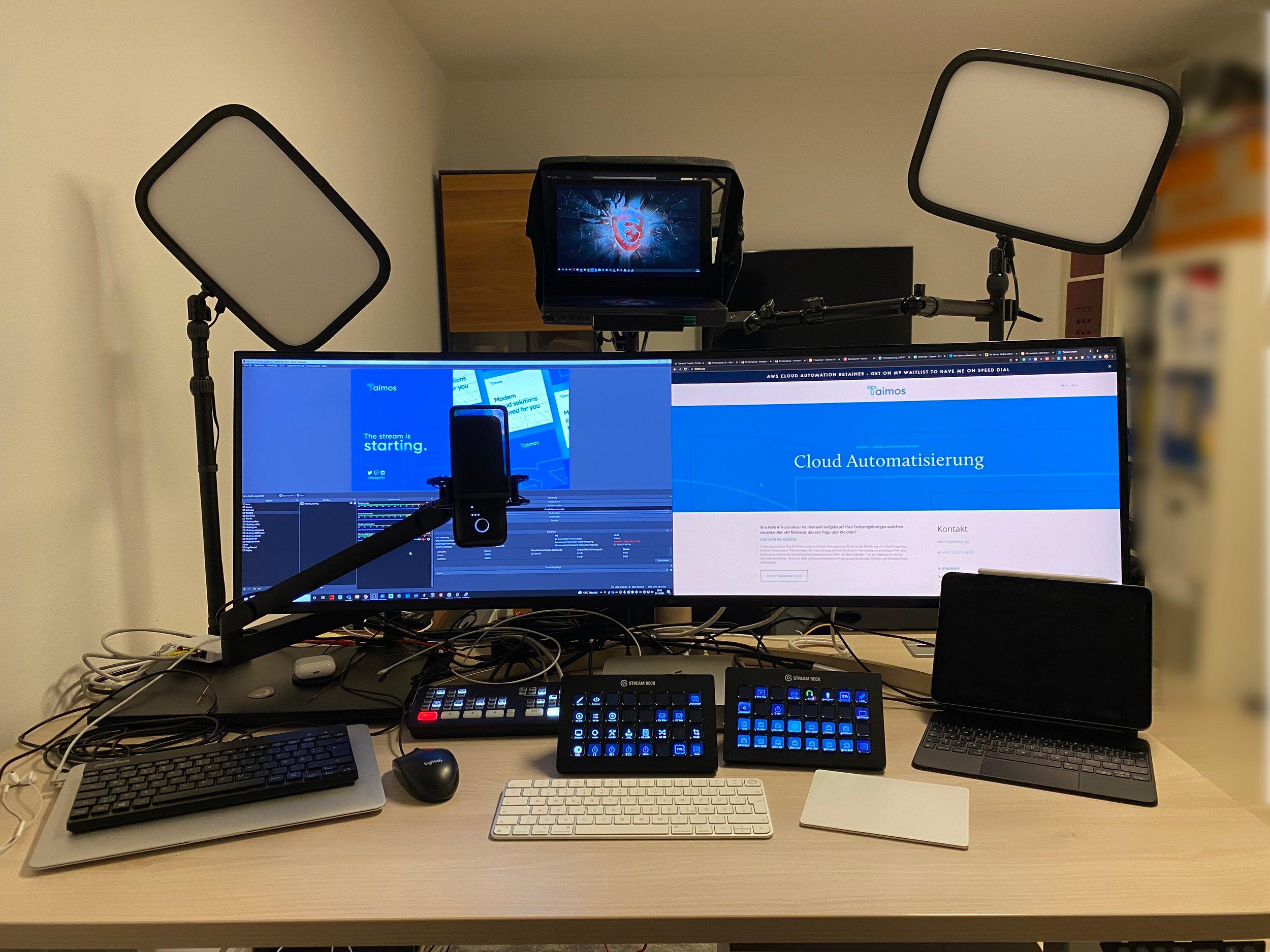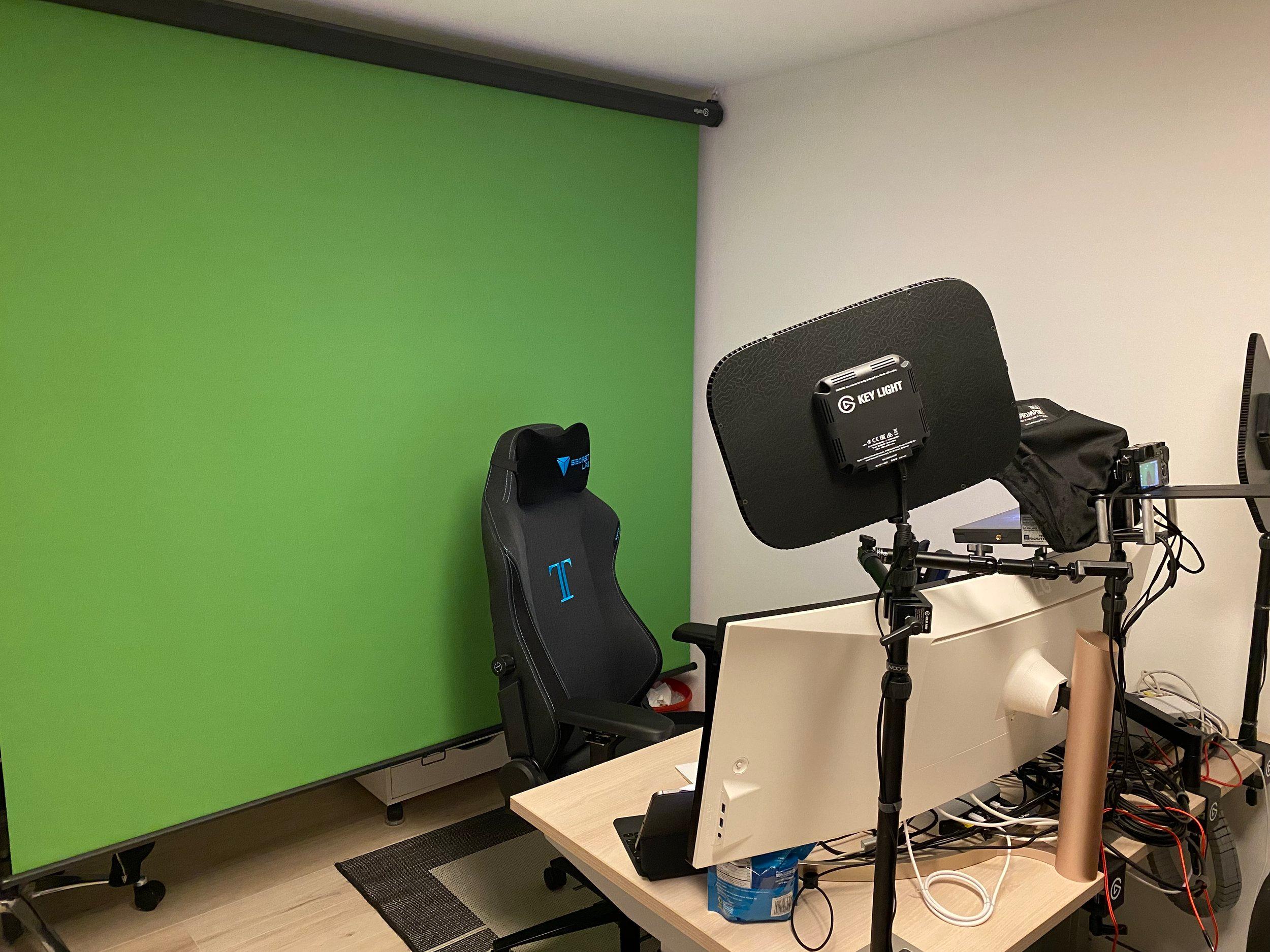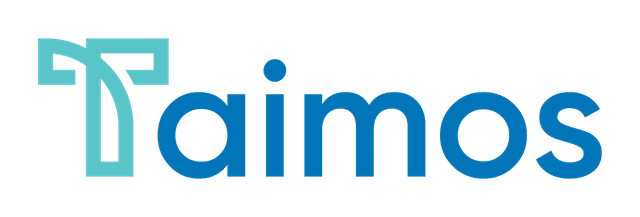My video conferencing and streaming setup
by Thorsten Höger, Cloud Automation Evangelist


Several times a month I get questions about my current audio and video setup. So instead of answering them all individually, I will collect all tools, gadgets, and gear in this post.
IMPORTANT: None of this is really necessary or mandatory. I love playing with tools and I like AV tech a lot.
Let's look into different parts of the setup
- Computers / Devices
- Audio equipment
- Video equipment
- My Desk
- Software / Tools
- Stage tech
Computers / Devices
I am running a setup of three main devices, a MacMini M1 as my work machine, an MSI Windows Laptop for all audio and video stuff, and an iPad Pro for drawing, as a second screen, and when I am on the road. When I started my setup I tried doing everything on my Mac but this did not work from a performance and tooling point of view. For AV tools Windows is often the better platform. So I decided to buy a gaming laptop with an Intel i9-10980HK CPU and a GeForce RTX 2070 Super for all AV-related tools.
Audio Equipment
My main microphone is the Elgato Wave:3 mounted on the Elgato Mic Arm LP and the shock mount with noise filter. The corresponding output device are the Apple Earpods with a long extension cord so I can move freely in front of my desk. I also use the Airpods 3 from time to time but due to battery life, they are not my default when I am in video calls the whole day.
Video equipment
The primary camera is a Sony Alpha 6000 mounted on an Elgato multi-mount. To have better eye contact with my meeting partners or stream viewers, I am operating the cam behind a TeleprompterPAD with a one-way mirror that reflects the contents of a horizontally mounted Lilliput A11 monitor. The benefit of this model is the possibility to inverse the screen on the display so my computer does not need to know about the mirror. The HDMI output of the camera is fed into the Elgato CamLink 4K USB capture dongle into the Windows laptop. For better lighting two Elgato Keylights are mounted on each side of the desk, illuminating me and my background, the Elgato GreenScreen MT mounted on the ceiling. To be able to share my MacMini screen and/or my iPad I need to feed these signals into the video laptop too. This is handled by an ATEM Mini by Blackmagic Design that is able to switch 4 HDMI input sources into one HDMI output and also acts as a camera input using USB-C on the laptop. The ATEM is connected to the MacMini as a second display where I put the windows I want to present to others. This way my main screen is still usable for speaker notes, preparing content, typing in passwords, etc. As there are two slots left on the video switcher I also have an additional HDMI cable on my desk to connect my iPhone as a second camera that films downwards on my desk surface where I can place the Elgato GreenScreen Matte to draw on paper or show hardware devices on screen.
My Desk
To be able to view both computers at the same time but still have a “clean” desk, my monitor is the LG 49” curved display in picture-by-picture mode with the AV laptop on the left and my MacMini on the right half of the screen. Both computers have an Elgato StreamDeck XL connected for easier usage of hotkeys. The desk itself is a standing desk the can be moved to different positions to be able to stand during presentations and sit during normal work mode on my SecretLabs Titan chair.
Software / Tools
Video laptop
- OBS to mix all video sources into nice feeds for Zoom, YouTube, Screen share, etc
- StreamYard to stream with other people on meetups, conferences, etc
- DaVinci Resolve to cut videos
- NVIDIA Broadcast, Krisp, and others to improve audio quality
- Zoom, Chime, Teams, etc for video conferences
MacMini
- SnagIt for screenshots for presentations, documentation, and blog posts
- Affinity suite for graphics editing
- A lot of work tools …
Stage tech
Hoping we will have on-site events again in the future, some tech is waiting to be used then:
- Rode Wireless Go II - wireless lavalier microphones for interviews and speakers
- t.bone freeU Twin PT 823 - hands-free microphone for speakers on stage
- Behringer U-Phoria UMC202HD - audio interface to connect stage audio to my laptop
- HDMI splitter - branch off projector feeds to the laptop for streaming and recording
- TallyArbiter - show which camera is active to speakers on a stage
Additionally, parts of my tech setup above will also go on events. That is also why I decided to buy a Windows gaming laptop instead of a desktop machine. To carry everything I bought a Pelicase 1535 Air.
Conclusion
While I really think that this tech helps me to produce better audio and video quality, I want to emphasize that this is not needed to make great content. Honestly, most parts of my setup are the way they are because I have fun playing with AV tech. Also, as you can see I am a big fan of the Elgato tooling. Let's see what I have not bought yet and what they come up with in the future. All the links in this post are just to show the products and are no recommendation to buy from a certain vendor and I do not earn money with it.

